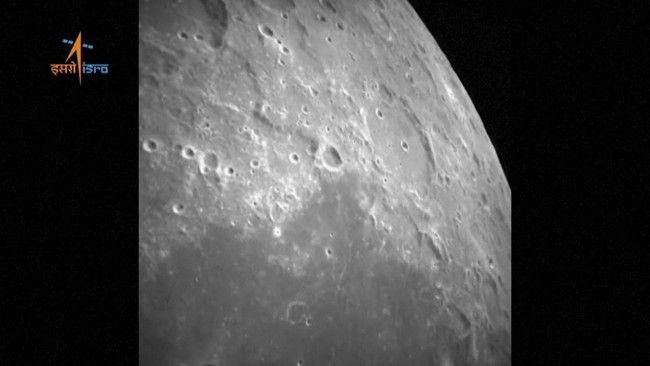
This article was originally published on PJ Media - Politics. You can read the original article HERE

Just after 4:00 PM Eastern Time on Sunday, Earth will be joined by a "mini-Moon." A school bus-sized asteroid will be captured by Earth's gravity and, for a time, become a second moon.
Advertisement
The name of this object is the rather uninspiring "2024 PT5." I can do better than that. Since the old Moon is named for a Roman goddess ("Luna), it's only fair that this new moon be named after a male. Doesn't have to be a male god, although fans often confused "Jordan" with a deity of some kind when he was playing and living above the rim.
Since most of the Greek and Roman gods are already in astronomical use (Jupiter, Neptune, Mars, or Ares), we're going to have to get creative. I always liked "Thor" as a strong, male name and Odin isn't half-bad either.
For purposes of this article, let's call the new moon "Loki," supposedly the "god of mischief."
True, it's too small to be very romantic since it's only 33 feet wide. No one is going to tell their girlfriend or boyfriend to come out with them and make love by the light of Loki, although the alliteration is fabulous. And I doubt whether anyone is going to claim they turned into a werewolf because Loki was full.
Alas, we won't have a lot of time to write sonnets or compose love songs in honor of the new moon. Loki will only be orbiting the Earth for a brief time, By November 25, the Sun's gravity will have captured the little devil and Loki will once again roam the solar system alone.
Advertisement
There’s no need to grab your backyard telescope to glimpse our temporary guest—this mini moon will, alas, be too small and dim to be seen by such a modest kit. Carlos de la Fuente Marcos, co-discoverer of 2024 PT5 and a mini-moon-studying astronomer at Spain’s Complutense University of Madrid, told Space.com that you’d need a telescope at least 30 inches (76.2 centimeters) in diameter paired with a digital detector to image the object.
If missing out on a telescopic snapshot of a faint fuzzy dot somehow leaves you feeling blue, there’s solace to be found in the future. Based on 122 measurements of its orbit across 21 days, 2024 PT5 is predicted to be transiently captured by Earth again in 2055, offering three decades in which to plan your ideal observations. (Tracing 2024 PT5’s orbit back across the years suggests this object also briefly became a mini moon in 1960, although no one noticed at the time.) But if you’re impatient, don’t fret—mini moons are somewhat common, and some last longer than others.
Mini-moons are captured by the Earth a few times every decade. Some objects believed at first to be mini-moons turned out to be manmade. Four years ago, 2020 SO was removed from the list of mini-moons after it turned out to be a jettisoned booster from a 1966 launch of one of the Surveyor satellites.
Advertisement
We've only recently begun to look for these objects.
“This happens with some frequency, but we rarely see them because they’re very small and very hard to detect,” said Richard Binzel, an astronomer at the Massachusetts Institute of Technology. “Only recently has our survey capability reached the point of spotting them routinely.”
The universe truly is a remarkable place, at once large and unknowable but also intimate and approachable.
This article was originally published by PJ Media - Politics. We only curate news from sources that align with the core values of our intended conservative audience. If you like the news you read here we encourage you to utilize the original sources for even more great news and opinions you can trust!










Comments